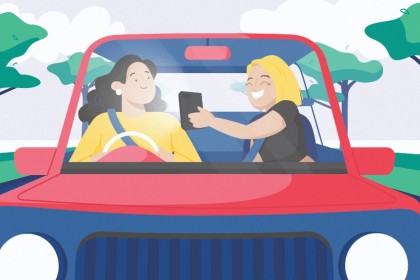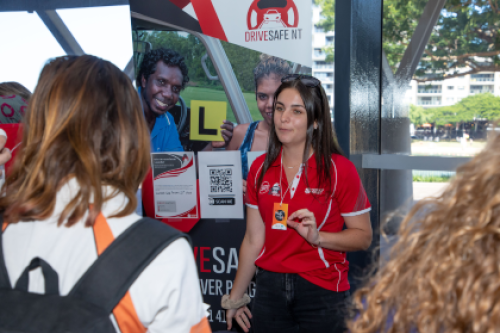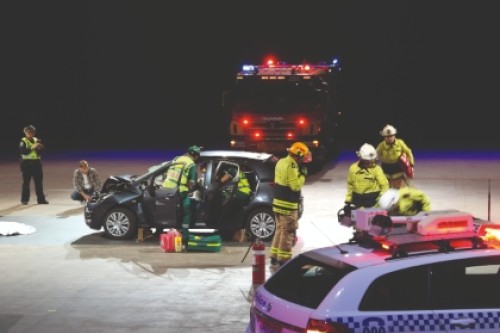
From fiddling with the GPS and listening to loud music to innocently sipping coffee, it only takes a split second for a driver to lose concentration. But there’s another distraction just as dangerous – your passengers.
WORDS BY: LAUREN FERRONE ILLUSTRATIONS BY: THOMAS OATES
Cruising around with company has its benefits. Who doesn’t want someone to talk to during those long, boring commutes? But when passengers negatively impact your ability to remain in control of the vehicle, it can be dangerous. We’ve highlighted five ways passengers can distract drivers and how to deal with it.
1. When the passenger judges your driving
“Go a bit faster. Brake,” says the backseat driver. Excessive comments about the driver’s actions are not only annoying but distracting, as it can make the person at the wheel second-guess themselves.
But it’s not all bad. Switched-on passengers can also act as a second set of eyes and spot hazards on the road.
A study in 2020 by New Zealand’s University of Waikato found that after the age of 24, a passenger in a car can decrease your chances of having a crash.
How to deal with it: The driver needs to remind passengers they’re in charge of everyone’s safety. Simply ask yourself if their opinion is helping prevent a potentially dangerous situation or causing it. If their comments are valid – like perhaps you took a turn too fast – consider taking their feedback on board.


2. When your passenger turns the music up too loud
If your passengers aren’t listening to your requests to behave, perhaps they can’t hear you over the blaring music pumping through the car’s speakers. Loud music means you can’t hear what’s going on around you, like the screeching brakes from a vehicle ahead, sirens from an emergency service vehicle or noises from your own car indicating something isn’t quite right.
How to deal with it: If a passenger is fiddling with the volume – or the vehicle’s other controls – simply explain that it’s distracting, and you’d prefer
3. When your passenger gives you directions
It can be frustrating when well-intentioned passengers try to give you directions. “Left, right, I mean left.” Giving directions is perhaps the most common cause of arguments between a passenger and driver. It can also be dangerous.
Research by Monash University’s Accident Research Centre revealed interactions between drivers and passengers caused about five per cent of distraction-related crashes in 2020. This included talking, arguing, and giving wrong directions to drivers.
How to deal with it: Familiarise yourself with the route before you leave home to avoid relying too much on your passengers. If all else fails, stop where it’s safe and check the directions.
4. When your passenger tries to show your something on their mobile phone
Your passenger is sharing a hilarious video of a dog doing the moonwalk and you take a little peek. In this moment, you’re breaking the law. Why? Looking at your passenger’s phone is equivalent to pulling out your own. In fact, using a mobile phone while driving can increase your chance of crashing by at least four times. The deadly consequences are the same even if you’re looking at your passenger’s phone. Remember, as the driver, you have a responsibility to keep your eyes on the road at all times.
How to deal with it: The onus is on you, as the driver, to inform your passengers you need to concentrate and can have a look when you’re safely parked.


5. When tiny passengers demand your attention
Tiny passengers screaming at the top of their lungs in the back seat is hard to ignore. Chances are you’ve panicked and started passing toys or snacks to your child from the driver’s seat to calm them down. You’re not alone.
In 2013, research by Monash University found children were 12 times more distracting to a driver than talking on a mobile phone while behind the wheel. Shockingly, researchers found that drivers in the study took their eyes off the road for three minutes and 22 seconds during a 16-minute trip to attend to their child. The majority were guilty of turning to look at the child in the back seat or watching the rear-view mirror (76.4 per cent), while others were distracted by talking to the child (16 per cent). One per cent surprisingly admitted to playing with the child.
How to deal with it: You can’t exactly ignore your little ones. That’s why it’s safer to pull over if your child needs help or appears in distress.
Did you know?
In the Northern Territory, passengers aged 16 years and over can be fined $500 for not wearing their seatbelt. That said, drivers are responsible for making sure all passengers are properly restrained with a seat belt or approved child restraint.
Perfect passenger pointers
1. Call out the driver if they’re doing the wrong thing, like using their mobile phone.
2. Help the driver by watching the road for any hazards.
3. Never block the driver’s view of the road.
4. Don’t create unnecessary noise, such as yelling or turning the radio’s volume too high.
5. Keep your arms (and other body parts) inside the vehicle at all times.



